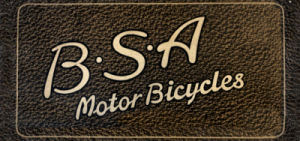



A smooth passage for the gas, combined with an airtight joint, is ensured by this method of fixing the 6 h.p. B.S.A. induction pipe.
A single large spring now takes the load on the B.S.A. fork

A desirable feature on the new B.S.A. - the straight pull of the rear brake operating lever.
Details of the adjustable tappet fitted to the BSA.
B.S.A. (Stand 69.)
4½ h.p.; 85x98 mm. (557 c.c); single-cylinder four-stroke; side-by-side valves; drip feed lubrication; B.S.A. carburetter; M-L chain-driven magneto; three- speed constant mesh gear; chain drive; 26 x 2½ in. tyres.
B.S.A. Cycles, Ltd., Small Heath, Birmingham.
For single-cylinder side-car work B.S.A. machines have made a reputation for reliability under hard usage. At the last Olympia Show, the company introduced a twin-cylinder model which has firmly established itself during the present year, and the same success is bound to follow the new single-cylinder machine which takes the place of the 4½ h.p. model previously marketed. This new machine may be said to be a redesigned proposition, using the older model as its nucleus, so externally those familiar with the well-known single will not, at first sight, observe much difference between the old and the new models. There are differences, however, and all are to the good. First, perhaps, should be mentioned the redesigned timing gear which now embodies external cams which materially reduce mechanical noises. There are also several other points which have been improved with a view to obtaining a great degree of silence, a new and larger silencer being one of them. The bore and stroke of the engine remain as before, but a decompressor is now fitted which greatly facilitates starting. Chief among the other improvements is the gear box, which now follows the lines of that fitted to the. 5 h.p. model in which the clutch is on the primary shaft and therefore quite inoperative when the gear is in neutral for starting purposes.
Apart from the power unit there is but little difference in the two types, but larger tyres and wheels are fitted (28 X 3in.), and very large domed mudguards are a noticeable feature. A refinement on the engine is the mechanical lubrication, and the cast aluminium chain guards will also be observed. These guards are oil-tight, but can be detached for chain inspection quite easily.
Partly sectioned models of both 4½ h.p. and 6-7 h.p. engines are shown, and an open gear box makes clear the operation of the sliding dogs and the control mechanism. Improved forks, an almost invisible spring seat post, and superb finish are features of both B.S.A. models.
The 3½ h.p. (500 c.c.) machine has temporarily dropped out of the lists.
Olympia Show, 1920
The Motor Cycle, December 2nd, 1920.